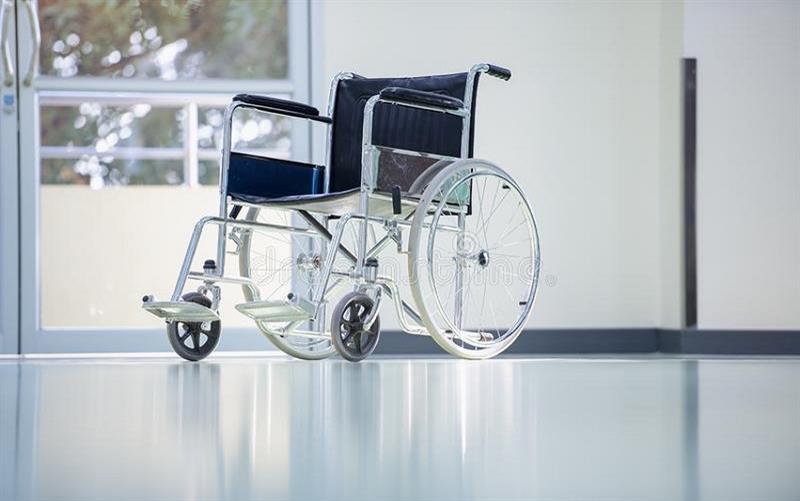
Even those who do not contact with people with disabilities commonly see manual wheelchairs in shopping centres, airports, and some stores, but few are aware that some wheelchair models may not be required for those with long-term disabilities. Manual wheelchairs exist in a range of forms and materials in addition to variations in appearance.
Another thing to consider is the wheelchair's material of construction. Four materials are used mostly to construct wheelchairs:
- Steel : Wheelchairs made of steel are heavier but also more durable and resilient.
- Aluminium: makes wheelchairs light and portable.
- Titanium: More lightweight wheelchairs made of titanium.
1. Carbon fibre is an incredibly strong substance that is also quite light.
Another critical selection when purchasing a wheelchair is whether to go with a rigid or folding frame. Due to the absence of joints and hinges, the chair's rigid frame's chassis is significantly lighter. On the other side, folding chairs are more portable, but they also use less energy. For example, a folding wheelchair uses less pulse energy than a rigid one.
2. Wheelchairs made of aluminium are lightweight and affordable.
Many people use wheelchairs made of aluminium. Although aluminium is physically lighter than titanium, the completed chairs are heavier because more metal is needed to obtain the same strength.
Aluminium may be produced at a low cost, but over time metal can corrode, become brittle, and split, reducing its durability. The strength of aluminium can be increased, however current advancements in welding have not been able to solve this issue.
3. Wheelchairs made of steel are robust and weighty.
In the past, wheelchairs that were frequently rented out were frequently made of steel. Due to their affordability, steel wheelchairs were frequently utilised in hospitals, shopping centres, and other public areas. Steel is a cheap but hefty material; while this reduces its mobility when used outdoors, it works just fine for short trips indoors.
When renting a wheelchair, aluminium is usually used because it is a better material than steel, which was once very popular.
4. Lightweight and robust wheelchairs made of carbon fibre
Carbon fibre wheelchairs are a relatively new innovation and are by far the lightest option on the market. Personalization is more difficult, though, because items like clamps and mounting hardware typically call for special purchasing or installation.
Because they are the lightest and strongest option, carbon fibre wheelchairs are sometimes the most expensive choice.
5. Wheelchairs made of titanium are strong and lightweight.
Unlike aluminium, titanium is built to last. It doesn't rust easily, and it doesn't get brittle and fracture easily over time. Actually, because titanium can bend somewhat like bone, it is highly effective at reducing ground vibrations.
Despite being slightly heavier than aluminium, titanium is stronger, therefore less titanium is needed, resulting in lighter chairs. Titanium is a difficult metal to work with because of its strength and can cost more than other metals because it requires more expertise to weld, bend, and mould.
6. Rigid wheelchairs versus folding wheelchairs
Rigid wheelchairs, despite their name, may fold. They form a three-dimensional shape rather than a tiny one when they fold. As a result, it is less transportable. Since they lack folding mechanics, rigid chairs are more streamlined and have fewer moving components, which enhances their performance, weight, and dependability. People with ongoing difficulties typically choose for rigid chairs because of these factors.
The majority of wheelchair "rentals" are foldable designs. This suggests that they can be folded and stored in a very small space. The obvious advantage is portability, but the folding mechanism increases the chair's number of moving parts, making it more prone to malfunctions and missing parts. Also frequently heavier are adjustable wheelchairs.
Additional factors pertaining to wheelchairs
Carbon fibre rear wheels are a popular choice among users. Since they are made of lightweight materials and have the weight of the wheel concentrated closer to the hub and axle, they are less resistant to pushing.
Some front caster wheels use springs and shock absorbers to reduce friction. Due to its proximity to the feet and legs, this region may make a difference for spasm sufferers.
The best option for individuals with continuing issues is a wheelchair that is especially created for them. People who only occasionally use wheelchairs may not think having such a complex solution is worth it and prefer less expensive wheelchairs. A person's performance can be enhanced and strain can be reduced by chairs that fit their body type.
The Things to Consider When Choosing a Wheelchair
You'll receive a recommendation for the best kind of chair to utilise following your evaluation. There are a few things to consider before you go shopping in order to determine the style and possibilities you want. These consist of:
- Do you plan to push your chair yourself or will someone else do it for you?
- Will you require a power option if you're pushing the chair yourself?
- When will you use it next?
- Are cushions necessary to avoid pressure sores?
- Do you need to lean back or tilt?
- Are you going to be outside?
- Are you a sportsperson? Do you require a wheelchair for sports?
- How frequently will you move your chair?
- What is covered by your insurance?